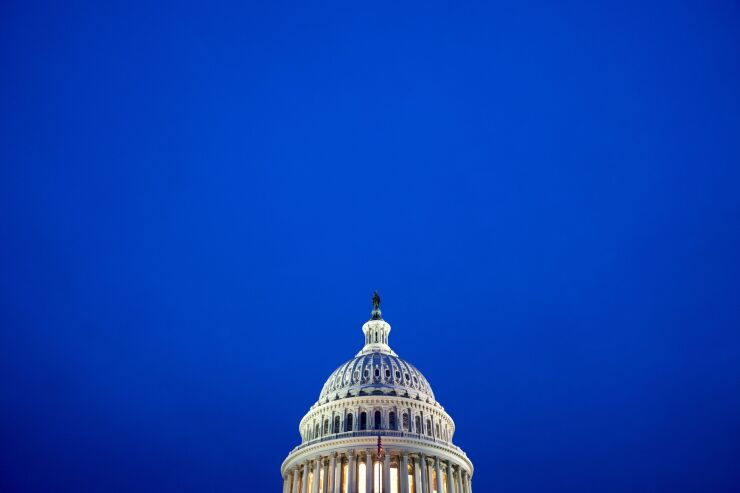Farewell to backdoor Roth conversions, a mainstay of large retirement accounts and estate planning for the wealthy.
And goodbye to half of a massive tax break for many entrepreneurs and their original investors.
A plan by top Democrats to raise taxes on the wealthy and corporations would axe two of the most lucrative benefits in the current tax code for affluent and soon-to-be-rich people.
The two benefits — one for building large, tax-free retirement plans by converting traditional accounts to Roth IRAs, the other for a special type of equity known as qualified small business stock, or
But buried in the bombshell draft plan released on Sept. 13 by the House of Representatives’ tax-writing committee is a proposal to limit so-called backdoor Roth conversions to individuals making no more than $400,000 and married couples making no more than $450,000. The door would shut on backdoor Roth conversions starting in 2032.
Also embedded in the plan: A call to axe the ability of taxpayers making $400,000 or more to cash in their QSBS 100% free of capital gains tax. Instead, such people would avoid tax on only 50% of their stock. They would owe the proposed higher capital gains rate of 28.8%, which includes the 3.8% Obamacare surcharge, on the rest. The current rate, with the surcharge, is 23.8%.
“This is a really big deal,” said Brent Lipschultz, a CPA and partner in the personal wealth advisors group at EisnerAmper, an accounting, advisory and tax consulting firm in New York. “Backdoor Roth conversions are over for high net worth individuals.”
Lipschultz added that the proposed restriction on QSBS “would starve innovation,” as “many have income above the proposed cutoffs.” That’s because plowing money into startups is inherently risky, and taking away half of the tax benefit might discourage investors.
The House’s tax-writing

Barely noticed in the draft’s call to nudge up the capital gains rate and raise the top individual rate to 39.8% from 37%, the two provisions have shocked wealth advisors and tax experts.
“The House bill ignored a lot of stuff in Biden’s proposals and threw in a lot of other stuff,” said James McCann, the chair of the tax practice at Kleinberg, Kaplan, Wolff & Cohen, a law firm that caters to investment funds, fund managers and high net worth individuals.
Ignored was Biden’s hotly contested proposal to limit heirs’ ability to avoid capital gains taxes when inheriting appreciated assets or property if they make $1 million or more. Bloomberg reported on Sept. 14 that the top House Democrat overseeing tax policy said that the proposal to curb so-called step-up-in-basis lacked sufficient support, "further dimming its chance" of becoming part of Biden’s $3.5 trillion economic package of spending and tax hikes.
In its place came the surprise bodyslam to backdoor Roth conversions.
“It will definitely change our strategies when it comes to retirement and retirement accumulation,” said Rob Cordasco, an accountant at Cordasco & Co., a boutique tax and accounting firm in Savannah, Georgia.
Backdoor Roth conversions no more?
Contributions to traditional IRAs are made with pre-tax dollars, so they’re deductible on an annual federal return. Owners pay ordinary federal rates when making required minimum withdrawals each year that must generally start at age 72.
By contrast, Roth IRAs are funded with cash on which taxes have already been paid, so there’s no deduction for putting money into them. But owners can withdraw their assets free of federal income tax and aren’t required to make annual minimum withdrawals.
Rich investors and their financial advisors
The Democrats’ proposal already
If both the House and the Senate agree to curbing Roth conversions by high earners — and it’s not clear that they will — one of the smoothest roads to amassing wealth would disappear not only for millionaires but also for those making as little as $400,000. Cordasco said advisors might start looking at life insurance contracts as a way to replace the tax-free income that would no longer come from converted Roths.
Four hundred thousand dollars is the new millionaire, under the House plan. Biden made the six-figure number the level at which he
Slimmer founder stock (QSBS) perk
QSBS has made instant millionaires of people who invested in startups that skyrocketed in value when they later went public, like Uber, Pinterest and Slack. Sometimes called founder stock, it’s a favored path to wealth for entrepreneurs and investors in Silicon Valley and other innovation hubs.
QSBS allows employees and outside investors with stock in a startup to avoid capital gains tax on either $10 million in profits or 10 times their original investment, whichever is higher when they sell their stock. It’s an engine of wealth for entrepreneurs because the second bucket can far exceed $10 million.
Under the current rule, for example, 10 times fair market value on a company where the initial investment was $20 million can mean $200 million in tax-free gains for its shareholders. Now it could mean $100 million tax-free, and the other $100 million subject to the 28.8% capital gains levy, so a tax bill of $28.8 million.
Instead, such taxpayers would be allowed to avoid the tax on only half of their QSBS. Prior to 2010, when the full benefit went into effect under a tax rule known as Section 1202, some taxpayers could avoid tax on only 50%-75% of their special stock.
The House plan, the most complete fleshing out to date of Democrats’ tax agenda, said the new curb would apply to transactions with QSBS after Sept. 13, with a carveout for transactions that are already “subject to a binding contract.”
Cordasco said that means if you’re already in a deal to sell your founder stock, you get the full 100% benefit. But if you sell or issue the stock after Sept. 13, you only get the 50% tax break. Combined with the loss of backdoor Roth conversions, he said, “we’re going to have to think about how we make up for this in a different fashion.”









